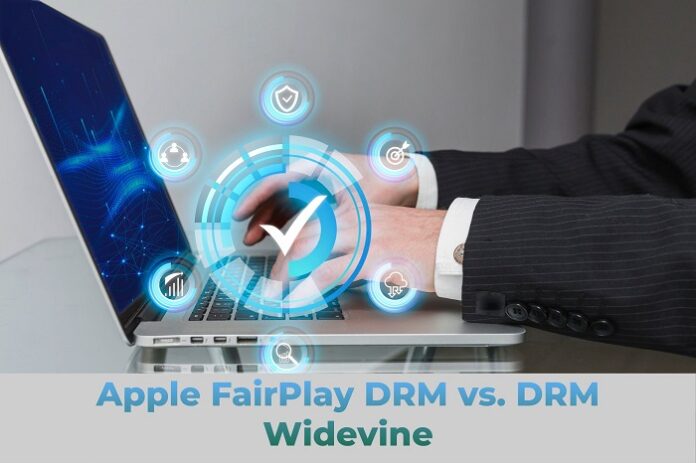In the digital content distribution world, the importance of Digital Rights Management (DRM) systems cannot be overstated. These systems are crucial for protecting and managing the distribution of digital media, ensuring that creators and distributors maintain control over their content. Among the plethora of DRM technologies, Apple FairPlay DRM and Google’s Widevine DRM stand out as leading solutions, each serving distinct ecosystems with their unique capabilities and applications. This blog post delves into the intricacies of Apple FairPlay DRM and DRM Widevine, comparing their features, applications, and how they shape the user and distributor experience in the realm of digital content.
Understanding DRM Systems
Digital Rights Management (DRM) technologies are essential tools for content providers, enabling them to impose controls on how their digital content is used and distributed. DRM systems protect copyright material by preventing unauthorized copying and distribution, ensuring that content creators and distributors can monetize their offerings effectively. With the rise of online streaming services, the application of DRM technologies has become increasingly critical in safeguarding content against piracy and unauthorized access.
Apple FairPlay DRM
Apple FairPlay DRM is a proprietary technology developed by Apple Inc. It is primarily used within the Apple ecosystem, including iTunes, the Apple App Store, and Apple Music, to protect audio and video content. FairPlay DRM is known for its tight integration with Apple’s hardware and software, providing a seamless and secure experience for users within the Apple ecosystem.
Key Features and Applications
- Integration with Apple Ecosystem: FairPlay is deeply integrated with iOS, tvOS, and macOS, offering a cohesive experience across all Apple devices.
- Adaptive Streaming: FairPlay supports HTTP Live Streaming (HLS), ensuring optimal playback quality based on the user’s internet connection.
- Security: It employs a sophisticated encryption mechanism, safeguarding content at rest and during transmission.
DRM Widevine
Widevine DRM is a DRM technology owned by Google, designed to support a wide range of devices, including Android devices, Chrome browsers, and other non-Apple devices. Widevine aims to provide secure content protection across various platforms, ensuring that content providers can reach a broader audience without compromising security.
Key Features and Applications
- Cross-Platform Compatibility: Widevine is compatible with a vast array of devices and platforms, making it an ideal choice for services targeting a diverse user base.
- Three Security Levels: Widevine categorizes devices into three security levels, allowing content providers to manage access based on the security capabilities of a user’s device.
- Support for Multiple Content Types: It supports the protection of both video and audio content, catering to a wide range of digital media distribution needs.
Comparing FairPlay DRM and Widevine DRM
While both FairPlay DRM and DRM Widevine aim to protect digital content, their approaches and ecosystems vary significantly.
- Ecosystem Compatibility: FairPlay is optimized for the Apple ecosystem, providing a seamless experience for users of Apple devices. In contrast, Widevine caters to a broader range of devices, including Android and web platforms, offering flexibility for content providers targeting a wider audience.
- Security Features: Both DRM systems offer robust security features, but they implement different encryption standards and protocols tailored to their target devices and platforms.
- Adoption and Reach: Widevine’s cross-platform nature makes it a popular choice for content providers looking to reach the largest possible audience. FairPlay, while more limited in reach, is the go-to choice for content distributed within Apple’s ecosystem, benefiting from the high engagement and loyalty of Apple users.
Conclusion
The choice between Apple FairPlay DRM and DRM Widevine depends largely on the target audience and platform strategy of content providers. For those deeply entrenched in the Apple ecosystem, FairPlay offers unmatched integration and security. Meanwhile, Widevine presents a versatile solution for protecting content across a diverse range of devices and platforms. As the digital landscape continues to evolve, the role of DRM technologies like FairPlay and Widevine will remain pivotal in balancing content security with accessibility, ensuring that content creators can continue to innovate while protecting their intellectual property.
Image by Freepik





